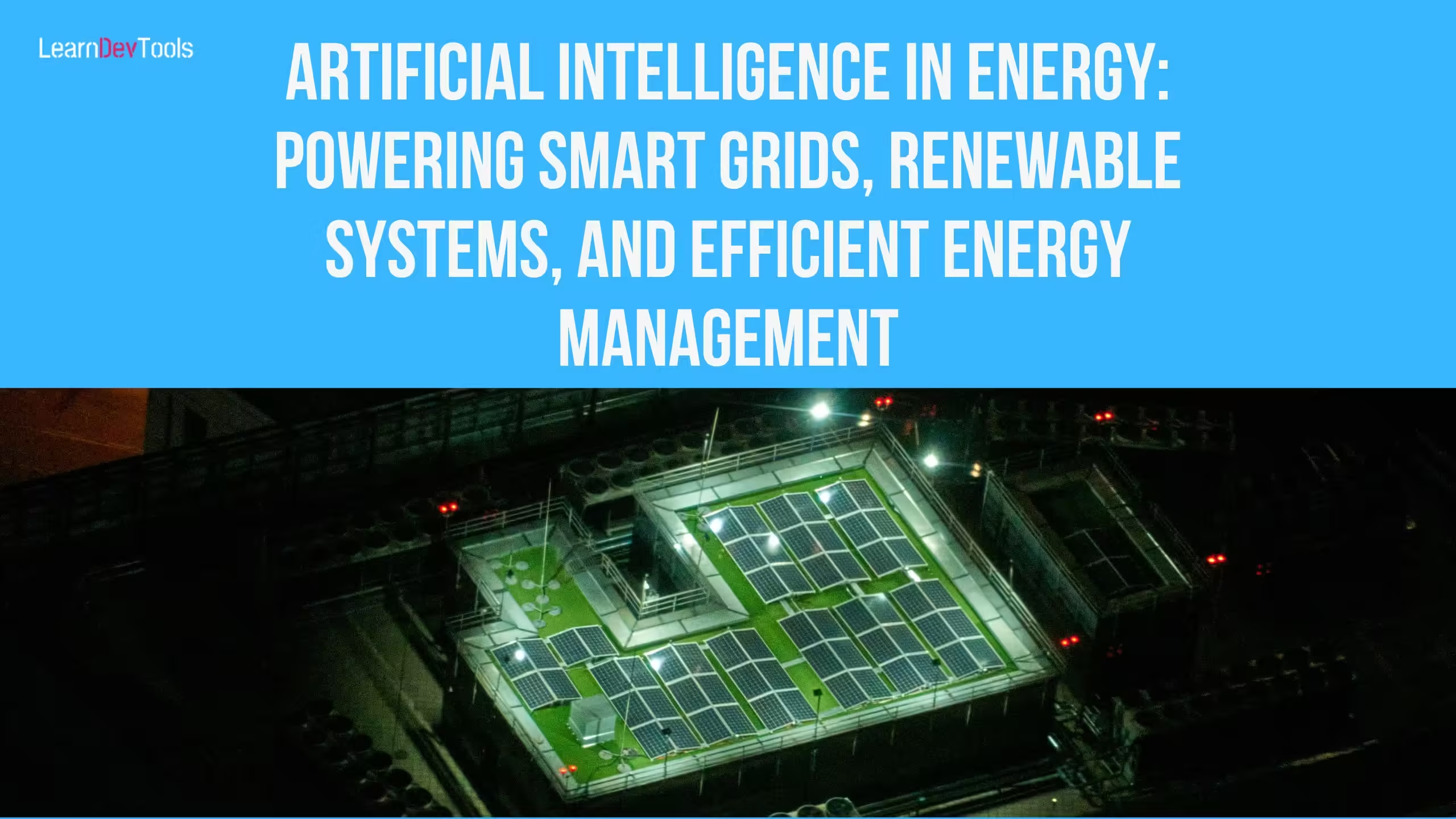In 2025, as the renewable energy sectors continue to mature, data has become as critical as electrons. For solar farms, wind turbine networks, or hydroelectric facilities, keeping assets running at peak efficiency depends on the right insights. That’s where KPIs—Key Performance Indicators—come in.
In this guide, we’ll explore the top 5 KPIs every renewable energy operators should track in 2025. You’ll learn why each metric matters, how to calculate it, and how it translates into operational and financial success.
What Are KPIs in Renewable Energy?
KPIs, or Key Performance Indicators, are measurable values that show how well energy systems are performing. They help operators:
- Identify operational inefficiencies
- Predict and reduce downtime
- Evaluate asset profitability
- Ensure regulatory compliance
- Communicate value to investors and stakeholders
KPIs are not just internal tools; they also play a growing role in ESG reporting, carbon credit programs, and utility-scale procurement decisions.
Unlike general metrics, KPIs are aligned to business goals. For example:
- A metric might be the number of sunny days.
- A KPI would be how those days impacted energy yield or downtime.
Consider plotting capacity factor and energy yield trends on a rolling 12-month basis. Include system age and component-specific overlays for deeper insight.
Why These KPIs Matter More Than Ever in 2025
Renewable energy projects are expanding in complexity. Hybrid setups combining wind, solar, and battery storage demand better visibility and real-time decision-making. Governments and investors expect operators to show transparent, reportable metrics that prove environmental performance and ROI.
Additionally, new technologies like AI-based forecasting, blockchain energy credits, and real-time emissions data make KPI alignment central to competitive success. Without accurate KPI reporting, operators risk financial loss, inefficiency, and regulatory failure.
How to Track These KPIs
Tools & Platforms:
- SCADA (Supervisory Control and Data Acquisition)
- Power Factors – Portfolio performance platform
- Solar-Log – PV monitoring
- WattTime – Emission signal tracking
- Google Earth Engine – Satellite and environmental data overlay
Comparison Table: SCADA vs Cloud-Native Monitoring
| Feature | SCADA Systems | Cloud-Native Platforms |
|---|---|---|
| Hosting | On-premise | Cloud-hosted |
| Accessibility | Local network only | Anywhere with Internet |
| Customization | Extensive | Moderate |
| Real-time Updates | Yes | Yes |
| Integration | Legacy systems | APIs & modern tools |
| Best Use Case | Centralized sites | Distributed portfolios |
Best Practices:
- Set thresholds and alerts for each KPI
- Use predictive analytics for maintenance scheduling
- Integrate with ERP or CMMS systems for financial impact visibility
- Export KPI data into dashboards for executives and investors
Top 5 KPIs to Track in 2025
1. Availability Factor
Availability factor measures the percentage of time a renewable energy asset is capable of producing power. It reflects system reliability and operational health, excluding planned maintenance and uncontrollable outages. This KPI is particularly important in solar and wind power plants, where high availability ensures maximum return on investment.
To track availability, operators rely on downtime logs, SCADA systems, and predictive maintenance scheduling. For optimized systems, an availability factor above 95% is considered excellent, according to the International Energy Agency (IEA Wind TCP Annual Report 2023).
In 2023, Enel Green Power reported that by leveraging digital twins and real-time analytics across its wind fleet, it improved turbine availability by 6%, which directly impacted revenue stability.
2. Capacity Factor
Capacity factor is the ratio of actual electricity generated over a period to the maximum possible generation if the plant ran at full capacity continuously. It illustrates how well the asset is utilized relative to its designed potential.
Solar plants generally have a capacity factor between 20%–30%, while wind farms range from 35%–50%, depending on location, technology, and environmental conditions
Unlike availability, this KPI accounts for both technical performance and natural resource variability. It is key for energy yield modeling, financial forecasting, and regulatory compliance.
3. Energy Yield per Installed kW
This KPI, also known as specific yield, calculates how much energy is generated for every kilowatt (kW) of installed capacity. It allows operators to compare sites of different sizes and identify underperforming assets.
For example, a solar PV installation in Southern Spain may yield around 1,600–1,800 kWh/kW annually, while one in Northern Germany might achieve 900–1,200 kWh/kW.
SCADA systems or cloud-native platforms provide real-time performance tracking at the module or string level, enabling granular performance diagnostics and better O&M planning.
4. Downtime Root Cause Analysis
Downtime root cause analysis (RCA) categorizes the reasons behind unexpected outages. This KPI is crucial for proactive maintenance, cost reduction, and component reliability.
Common issues include inverter failures, sensor malfunctions, transformer trips, grid faults, and environmental effects like snow, ice, or wind shear. Advanced platforms such as Power Factors or Ingeteam’s CMS tools automate downtime categorization and suggest corrective actions.
According to a 2023 report from DNV GL, wind farm operators who systematically tracked downtime RCA reduced unplanned maintenance costs by 18% in under 12 months.
5. Emissions Avoided (CO2e)
This environmental KPI quantifies the greenhouse gas emissions that would have occurred if fossil fuels had been used instead of renewables. It’s calculated using standardized emissions factors for displaced generation, usually in kilograms or metric tons of CO2-equivalent.
Operators typically use EPA’s AVERT tool (U.S.) or EU-wide factors published by ENTSO-E. For example, a 50 MW solar plant in California operating at a 26% capacity factor might avoid over 35,000 metric tons of CO2e annually.
This metric supports ESG disclosures, green bond certifications, and voluntary carbon offset programs. In 2024, NextEra Energy integrated real-time CO2e tracking across its solar fleet to better align with Scope 2 reporting requirements.
How to Track These KPIs
- Use monitoring platforms (SCADA, cloud-native)
- Set alert thresholds
- Integrate with asset management systems
- Automation and AI tools for forecasting
Bonus: KPI Trends to Watch in 2025
- Real-time grid responsiveness metrics
- SOC accuracy for battery-integrated systems
- Cost per MWh delivered
- ESG-aligned reporting indicators
Visual Summary: Top 5 KPI Quick View
| KPI | What It Measures | Why It Matters |
| Availability Factor | System uptime as a % of total time | Indicates reliability |
| Capacity Factor | Actual vs. potential output | Shows how efficiently assets perform |
| Energy Yield/kW | kWh per unit of installed capacity | Compares asset or portfolio performance |
| Downtime Root Cause | Categorized outage events | Supports predictive maintenance |
| Emissions Avoided (CO2e) | Prevented emissions vs fossil fuel grid | Key for ESG and carbon credit programs |
Extended Use Cases for Each KPI
Availability Factor in Practice
NovaWind Ltd. used digital twin modeling to predict gearbox failures in remote turbines, raising uptime across its fleet by 10% year-over-year.
Capacity Factor in Merchant Markets
A utility-scale project in Chile operating under a merchant model tracked real-time dispatchability and adjusted inverter ramp rates to optimize peak delivery windows. Their capacity factor reached 47%.
Energy Yield/kW for Microgrids
An off-grid microgrid in rural Kenya optimized solar tilt and orientation seasonally. Yield per kW improved by 28%, extending battery life and reducing generator reliance.
Downtime Analytics and O&M Strategy
By tagging failure types, a 20 MW wind farm in Portugal reduced unclassified outages by 60%, slashing reactive maintenance by half.
Emissions Avoided and Regulatory Reporting
A 100 MW solar array in Germany integrated real-time emissions tracking using WattTime, enabling participation in the EU’s carbon offset registry.







